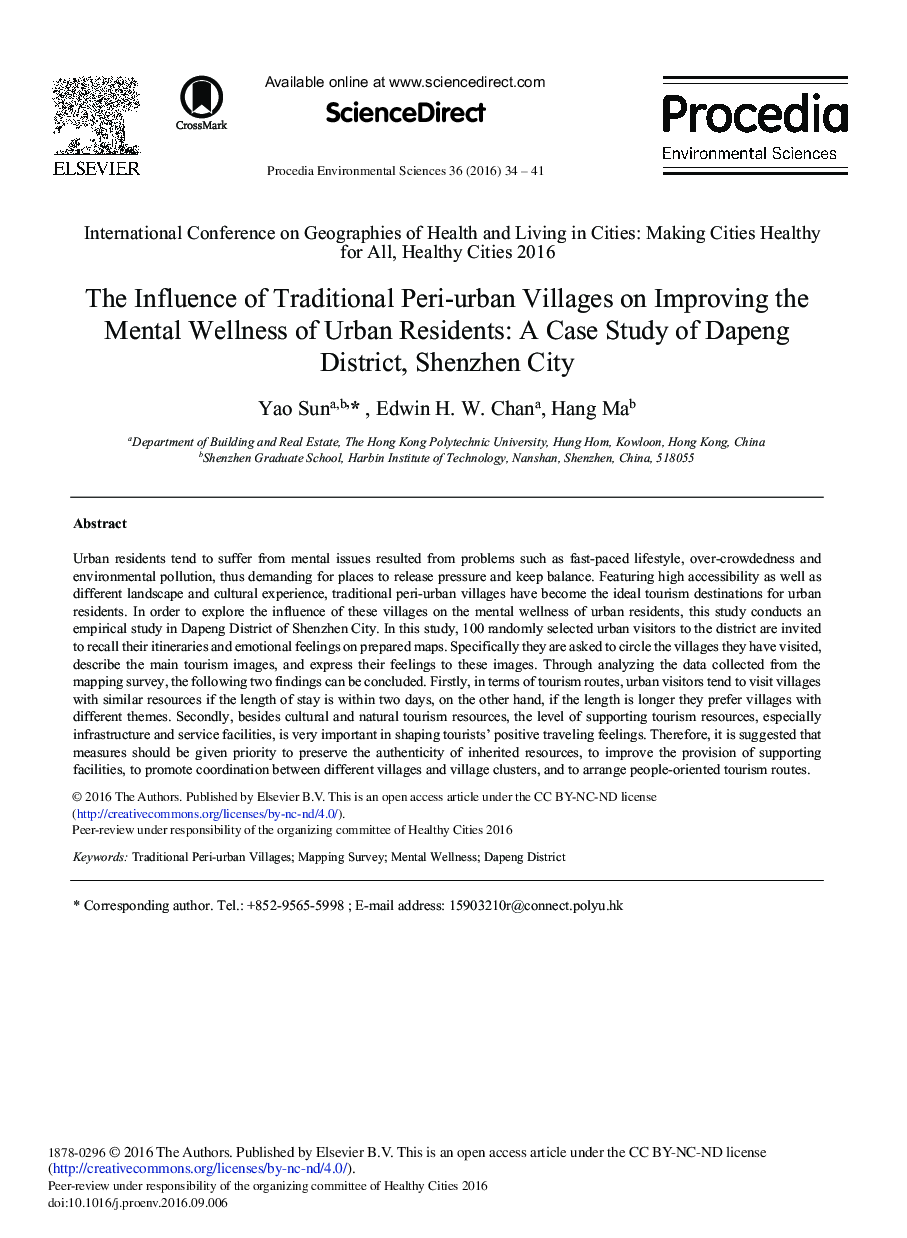| Article ID | Journal | Published Year | Pages | File Type |
|---|---|---|---|---|
| 4401320 | Procedia Environmental Sciences | 2016 | 8 Pages |
Urban residents tend to suffer from mental issues resulted from problems such as fast-paced lifestyle, over-crowdedness and environmental pollution, thus demanding for places to release pressure and keep balance. Featuring high accessibility as well as different landscape and cultural experience, traditional peri-urban villages have become the ideal tourism destinations for urban residents. In order to explore the influence of these villages on the mental wellness of urban residents, this study conducts an empirical study in Dapeng District of Shenzhen City. In this study, 100 randomly selected urban visitors to the district are invited to recall their itineraries and emotional feelings on prepared maps. Specifically they are asked to circle the villages they have visited, describe the main tourism images, and express their feelings to these images. Through analyzing the data collected from the mapping survey, the following two findings can be concluded. Firstly, in terms of tourism routes, urban visitors tend to visit villages with similar resources if the length of stay is within two days, on the other hand, if the length is longer they prefer villages with different themes. Secondly, besides cultural and natural tourism resources, the level of supporting tourism resources, especially infrastructure and service facilities, is very important in shaping tourists’ positive traveling feelings. Therefore, it is suggested that measures should be given priority to preserve the authenticity of inherited resources, to improve the provision of supporting facilities, to promote coordination between different villages and village clusters, and to arrange people-oriented tourism routes.
